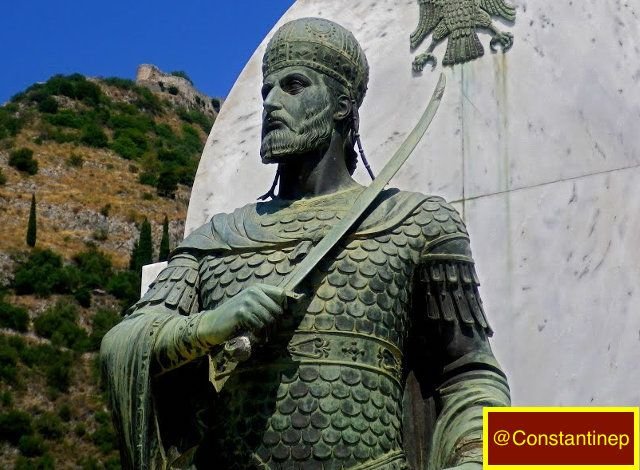The Chinese Braid: Untold History #2
Preface
The second instalment of untold history will centre on an interesting subject that most Westerners have not been exposed to (until today), albeit, I am sure our friends from the Orient will be familiar with the subject matter. Today, I present to you: The Chinese Braid, Qing's Consolidation of Power

The iconic hairstyle that you may have seen in your favourite martial arts film was not a Chinese fashion statement. The long singular braid and half shaved head typical of 19th and early twentieth century Chinese migrants seen in the black and white photos entered the ethos of [mainland China] during the 17th century in the aftermath of the ruthless Qing Conquest of the Ming Empire. This hairstyle is referred to as the Manchu queue, which was the cornerstone of Manchurian socio-cultural identity.
I may be tendentious in my assessment, but It is apparent to me that this is an interesting piece of history due to the fact that it is a case study for Governmental imposition of social norms on the wider population. However, I do understand it may be a false equivalency in today's context due to the barbarism and lack of sophistication of the Qing Government at that time. Nevertheless, I hope that you take away something new from today's lesson.
Context
By the 17th century the Ming Empire was in decline and the country was subsequently rife with peasant revolts and rebellions from numerous military factions and Manchu clans. The precedent for the chaos was a proclamation of a new dynasty by the the chieftain of the Manchurian clan of Aisin-Gioro. In the midst of the chaos the chieftain of the Aisin-Gioro Clan, Nurhaci, decried the edict of Seven Grievances, effectively declaring war on the Ming Empire. Through tactful political manoeuvring, such as betrothing the defected Han Chinese generals to Manchu wives, he was able to make substantial territorial gains. Moreover, the successor of Nurhaci continued the conquest of Ming, however, he began a process of assimilating Han defectors by requesting that they sport the traditional Manchu Queue. Prince Dorgon (son of Nurhaci) became the effective regent of the Qing Empire in 1643 in the midst of the conquest. Although, there was an internal power struggle over the succession of the throne between Dorgon and his brother I am afraid I must gloss over the details and get to the crux of the lesson.

Adoption
When Dorgon assumed military command and conquered the capital of the Ming Empire, Beijing, in 1645, he postulated an edict declaring that all Han Chinese men must shave their foreheads and tie their hair in a braid. Those who refused Dorgon's edict were tortured and subsequently killed. Moreover, the terms of surrender for peasant revolts and military renegades included that they must observe his new social policy. The Manchu queue became a form of identifying those who were his subjects. Furthermore, those who did not were seen as remnants of the Ming Empire and the sworn enemy of the state.
When the peasants did not readily adopt the new hairstyle of the state the Manchu military apparatus made lethal reprisals, including the terrible Yangzhou Massacre where Chinese sources claim at least 800,000 people were slaughtered. The conclusive conquest of the Ming Empire and social consolidation of the peoples resulted in the iconic hairdo that we associate with traditional Chinese culture today. This social policy resulted in the assimilation of numerous Manchu peoples into Han Chinese. There was a reciprocation of the Manchu policy of betrothing subservient Han to Manchu noblewomen, resulting in a virtually indistinguishable race after four generations.
Aftermath
Following the conclusion of the Qing Empire, the Manchu Queue became a symbol of Han Chinese submission to the minority Manchu Government. Anti-Qing Literature and primary historical documents surfaced in the early twentieth century from republican revolutionaries who sought to dispel the myths propagated by the Manchu Government. The hairstyle became a political symbol and in 1911 when the Chinese Republic was declared, the men were said to be parading in the streets and cutting off their queues. Moreover, Chinese emigrants kept the hairstyle as was culturally customary due to repression of the atrocities that the Manchus committed during the conquest of Ming. A small revivalism of the Manchu Queue has begun in China, although, I believe that the Chinese Government will suppress such blasphemies.
Thank you for reading and your support.
Follow @constantinep for more history, politics and economics.
Please comment any feedback below!
Main Source:
- Wakeman, Frederic (1985), The Great Enterprise: The Manchu Reconstruction of Imperial Order in Seventeenth-Century China, Berkeley, Los Angeles, and London: University of California Press, ISBN 0-520-04804-0. In two volumes.


Interesting, thanks! :) Nice to see a fellow Steemian fan of history who researches his subjects and uses his own word rather than copy paste. Check my "Enemies of Rome" series! Upvoted and Followed!
Interesting how the smallest things can be the most important. Up-voted x
Congratulations @constantinep! You have completed some achievement on Steemit and have been rewarded with new badge(s) :
Click on any badge to view your own Board of Honor on SteemitBoard.
For more information about SteemitBoard, click here
If you no longer want to receive notifications, reply to this comment with the word
STOP